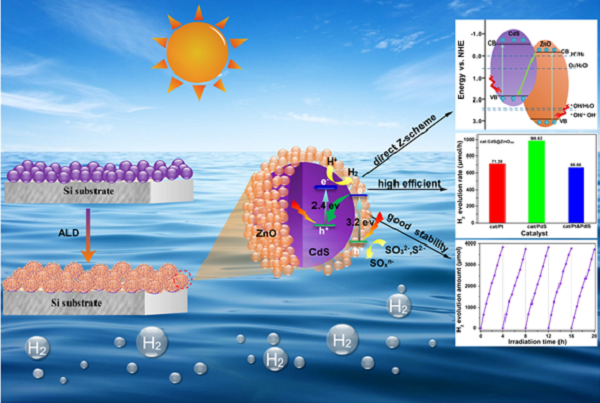A novel approach to designing catalysts for hydrogen production

Recently, the Center of Nanomaterials for Renewable Energy at XJTU School of Electrical Engineering was the first to announce a new way to design a group of new catalysts with a CdS@ZnO core-shell structure containing a controllable ZnO shell through atomic layer deposition. Compared with traditional liquid-phase synthesis, this method closely contacts the two semiconductors and effectively improves the separation and transmission efficiency of photogenerated electrons and holes, thus largely promoting the catalytic efficiency of composite semiconductors. CdS@ZnO prepared by this method improves the photocatalytic hydrogen production rate to as high as 98.82mmol/g/h, which is 5.6 times higher than the hydrogen production rate in previously reported CdS-ZnO system. In addition, the ZnO shell can effectively prevent photochromic corrosion of a CdS nucleus, leading to excellent photocatalytic stability of the composite catalyst. The process is expected to be widely applied in the field of photocatalytic hydrogen production for achieving remarkable improvements in catalytic efficiency and catalytic stability.
These research results were published in Nano Energy, the top periodical of nano-materials field, entitling “Rational design of CdS@ZnO core-shell structure via atomic layer deposition for drastically enhanced photocatalytic H2 evolution with excellent photostability”. XJTU Doctoral candidate Ma Dandan authored this paper with others, including Associate Professor Shi Jianwen from XJTU and Professor Wang Lianzhou from the University of Queensland of Australia.

